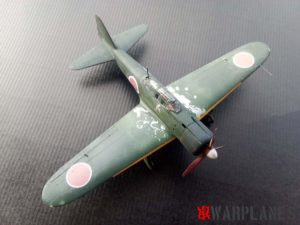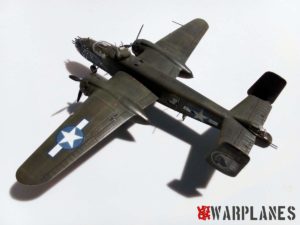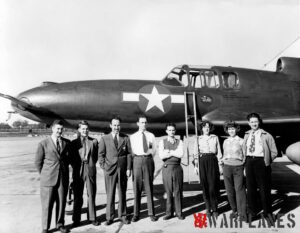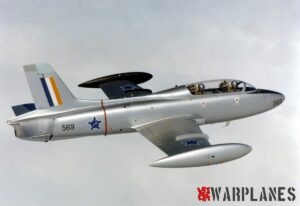The PZL-Bielsko SZD-51-1 Junior
Isn’t it the wish of all model builders to build a kit of a plane they have actually flown in?
The answer is very short: yes, of course! When you are an active pilot and also a model builder, this wish is even stronger! Yes I AM an active pilot; I fly gliders for more than 15 years. Unfortunately, gliders are not very popular at model kit manufacturers!
Some time ago, I was so lucky to find at least a model kit of my favorite glider: the Polish SZD-51-1 Junior. It is a release from the Polish Ardpol at 1/48 scale. The box content shows the following nicely pressed resin parts: fuselage halves, wings, horizontal stabilizer, wheels and instrument panel. Further, the box contains two vacform canopies of clear material and a decal set for the Polish SP-3302. It is all very, very basic and straightforward and it must be one of the simplest kits to build. Details from the photo series can be added of course!
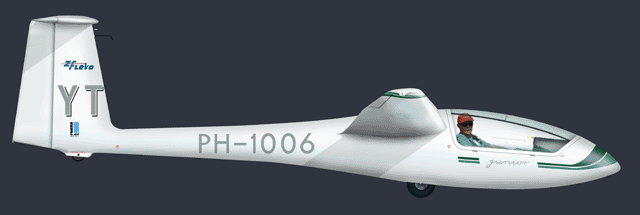
Of course I am NOT going to build it as the SP-3302, but as my favorite PH-1006.
PH-1006 is Junior with c/n B-2129 owned by the Dutch gliding club ZC FLEVO, based at Biddinghuizen in the new reclaimed land area. It was purchased brand-new directly from the PZL-Bielsko factory in 1994 to replace Schleicher K-8c PH-432 that was quite extensively damaged after a landing accident. It is still in use as the first single-seat glider for beginning solo pilots and for more general local ‘fun flying’. I can assure you everybody wants to fly it!
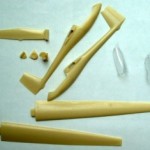 I have spend many happy hours in PH-1006 since 1994 with hundreds of starts. How does it fly? Well, I can be very short: it flies very easy and pleasant and it is very forgiving when mistreated. It keeps flying even near the stalling speed, and it gives a very clear warning at the stall. It starts shaking, and when the stick is pulled back a little bit further, she drops the nose, picks up speed and keeps on flying! Even at asymmetric stall, the plane will not easily enter a spin! And if entered, it can be easily corrected by giving opposite rudder.
I have spend many happy hours in PH-1006 since 1994 with hundreds of starts. How does it fly? Well, I can be very short: it flies very easy and pleasant and it is very forgiving when mistreated. It keeps flying even near the stalling speed, and it gives a very clear warning at the stall. It starts shaking, and when the stick is pulled back a little bit further, she drops the nose, picks up speed and keeps on flying! Even at asymmetric stall, the plane will not easily enter a spin! And if entered, it can be easily corrected by giving opposite rudder.
The reason for its very decent and safe flying characteristics can be clearly seen when looking at the plane’s wing: it is a relatively thick wing with a very ‘conservative’ Clark Y type profile!
Some history:
The Junior was developed in 1979 as a simple to flyand easy to maintain new generation type of club glider. It was designed and built by aerobatic pilot M.Sc. Stanislaw Zientek and by technical engineer M.Sc. Andrzej Paporiek. First flight of the prototype was made on 31 December 1980 at Bielsko-Biala. The first five production Juniors were supplied to various clubs in 1984. It proved to be very successful and popular and many hundreds were built over the 20 years it was in production. The Junior is intended as a general-purpose single seat club glider and with its durable fiberglass construction they will be a popular and general sight for many years!
Some technical details:
Power plant: gravity drive without thermals and nuclear fusion drive (the sun!) with thermals (and no one can argue this is not true!!)
Wing span: 15.00 m
Length: 6.69 m
Height: 1.57 m
Wing area: 12,51 m2
Empty weight: 215 kg
Max. load: 140 kg
Max. weight: 380 kg
Flight performances with a 90 kg pilot:
Lowest flying speed: 61 km/h
Lowest sink rate: 0.6 m/sec at 70 km/h
Glide ratio: 1:35 at 80 km/h
VNE: 220 km/h
Wing profile: Wortmann S02-196/SO 1/2-158
Remark:
Just for other people interested in scale models of gliders:
Revell has released some years ago a beautiful 1:32 scale kit of the two-seat Schleicher ASK-21 glider with a very detailed cockpit interior.
Nico Braas
Photo- Nico Braas Color profile- Srecko Bradic


















